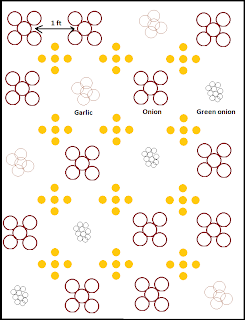- Spanish lessons at lunchtime, which I totally did with ridiculous faithfulness (okay, maybe my resolve weakened on Fridays)
- I went to Ecuador for a week! Blog forthcoming. Sneak peak above.
- But I kept giving you blogs with a gardening theme...which was a real test of what I had learned as well.
- Soil Amendments for Beginners
- Double Digging
- Companion Planting
- Transplanting Seedlings
- Planting the Garden
- Moon Planting
- We also went on a mini hiking trip with friends! Blog forthcoming. You know the drill.
- Speaking of friends, one of mine just got a new job, so we had a celebration for him! The fondue was a hit.
- Bottle wine. Wow. This did not even come close to happening. Which means that next month is going to require both bottling AND starting a new batch of wine.
- Well, wine. Bottling, and starting a new batch. Blueberry? Depends on prices I guess.
- Keep you updated on my garden! Fun things are happening, and they make me feel like a successful human being! Maybe I'll do a "harvest month" segment this fall to briefly cover things like canning/drying/freezing and seed saving.
- I totally fell off the Paleo wagon with all this traveling, and I've been suffering the consequences. So, first order of business, get back on track with chipotle meatballs with guacamole.
- But, in all fairness, I'm already planning on falling off the wagon with Swedish Cloudberry Parfait (and since cloudberries are somewhat scarce in these parts, it will probably be strawberry with a hint of watermelon).
- Summery things! Memorial Day kicked off the great weather, so now it's time for camping and/or campfires! Let's make it happen, friends!
- Reformat my laptop. I already know this isn't going to happen, but it IS on the list. A (nerdy) girl can dream, right?
- Kahlua! Kyle's mom has a great recipe. And if you're willing to make your own kahlua, you will undoubtedly be willing to make the chocolate syrup that goes into it. Bob, if you read this, I believe we will join you for white russians sometime soon :)
So May...great month. Great. I really appreciate all the people in my life and all they do for me without even realizing it. You guys are great! And I also want to thank the people who have told me they like this blog...because sometimes I forget that people actually read it(!). Anyway, it's nice to have a little validation every once in a while that I'm not just a crazy person cooking up kitchen disasters and garden foibles. Speaking of which - I just found out today that I definitely planted radishes in some square footage dedicated to cucumbers. Whoops! Too late to do anything about it now :)


















































